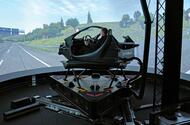How Simulators Are Revolutionizing Driver Assistance Technology

The Evolution of Simulators
Simulators have undergone significant advancements in recent years, moving beyond simple screens and fake steering wheels. Today, state-of-the-art motion simulators are capable of replicating the sensations experienced by drivers in real cars on the road or track.
Benefits for Manufacturers
Manufacturers of full-sized driver-in-loop motion simulators, such as Dynisma and Ansible Motion, are finding these advancements particularly beneficial. The increasing complexity of modern road cars presents challenges for manufacturers, and motion simulators provide a valuable tool for designing and testing new software.
Simulating Advanced Driver Assistance Systems (ADAS)
Dynisma, known for its Formula 1-grade Dynisma Motion Generator (DMG) and partnership with McLaren Automotive, sees a new role for its product in developing advanced driver assistance systems (ADAS) for road cars.
The Science Behind Motion Simulators
Motion simulators combine complex software and mechanics. The software creates a realistic visual representation of the outside world, while the mechanics generate the corresponding movements that a driver would expect to feel.
The Challenge of Latency
One of the main challenges for simulator designers is latency, which refers to the delay between the visuals generated by the computer model and the driver’s expected sensations. In a real car, there is no latency, but even a small delay in a simulator can affect the driver’s ability to accurately gauge the car’s reactions.
The Importance of Instantaneous Response
The F1 requirement for a motion simulator is a latency of less than four milliseconds, which Dynisma claims to achieve with its DMG system. This near-instantaneous response is crucial for developing ADAS features such as lane keeping assistance, lane departure warning, emergency lane keeping, and autonomous emergency braking.
Exploring New Possibilities
Dynisma is also exploring the use of its DMG system in evaluating the handover from autonomous driving back to human control. Simulators provide a safe environment to test various scenarios quickly. Additionally, the DMG can be utilized in fields such as vehicle dynamics, aerodynamics, propulsion systems, noise, vibration, control systems, human-machine interface, and user experience.
The Future of DMG
Dynisma anticipates that the DMG will have further applications next year when new European regulations require small-volume manufacturers to adopt ADAS in their vehicles.

